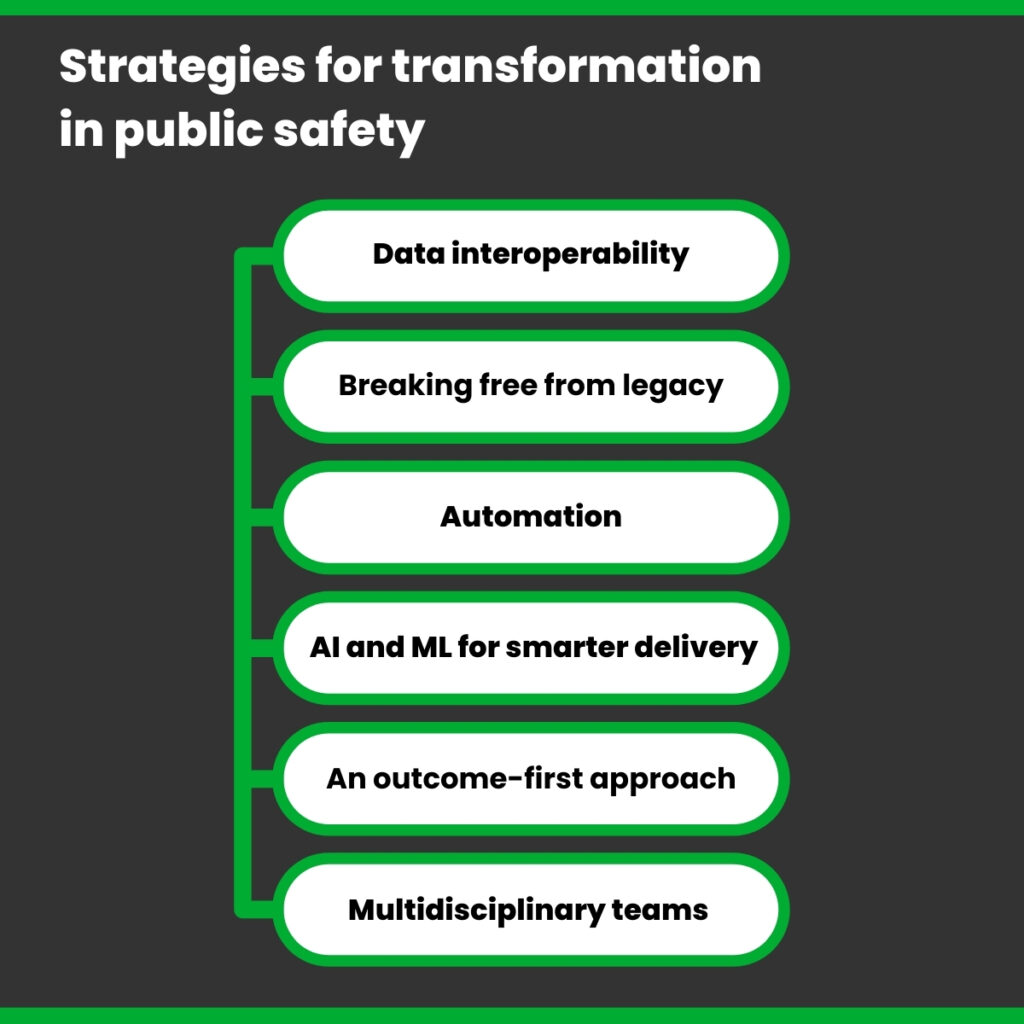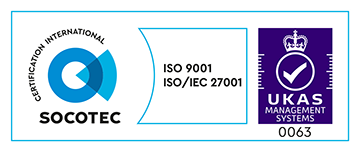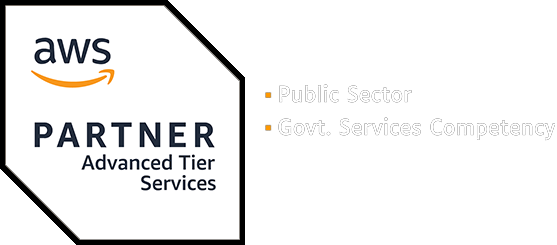Last year I spoke about the top 3 ways to address the challenges and demands in public safety services. While that advice still stands, I’m back with more thoughts on navigating the complexities we see time and time again in public service transformation.
The pressure on public services
To meet the needs of society, we need services that are modern, secure and easy to change. But the problem remains – our public services are beyond stretched.
Not only are they under immense pressure due to growing communities, but money is tight. And current spending is unsustainable. Balancing budgets and meeting citizen expectations can feel like walking a tightrope.
A £22 billion reality check
Against the backdrop of an audit last year, a £22 billion black hole was found in the public finances, highlighting the rocky nature of public service funding. It’s becoming increasingly clear that the status quo is no longer viable.
It’s no surprise that this is reflected in dramatically declining public trust. I’ve spoken before about the “Netflix effect” of instant service. As a quick reminder, this is where the public expects the same seamless digital experiences they get from Amazon and Netflix. Government services often fail to meet these high expectations. We want information at our fingertips, with connected, real-time insights and communications. That’s a stark contrast between the digital experiences we’re used to and the services we receive from our critical public organisations.
Data maturity and the way forward for public safety
Making digital and data perform in this way in public safety and justice organisations is difficult. Anyone who has worked across government departments knows there are inconsistent standards. From department to department there’s a varying degree of data maturity.
Combine that with often siloed data and this seriously impacts service delivery and transformation. There’s a very real need for cross-department data sets to talk to one another if we want to help better manage support in our communities and reduce cross department failure demand and service delivery costs.
All this to say that the pressure is mounting on local authorities, policing, ambulances and the wider civil service we all rely on each and every day.
6 strategies for transformation
That’s a lot of complex challenges our public safety services are facing. How do we go about creating meaningful change from the inside? I’ve put together a list of 6 crucial areas to focus on when it comes to transformation that can help organisations do more.

1. Data interoperability for a joined-up experience
Interoperability is the ability for different systems to communicate and share data with each other. To build a truly efficient and cost-effective service, data interoperability is crucial. To get started with this, you need to understand your data strengths and weaknesses. Then you’ll be in a better position to see where and how you can automate sharing and provide secure API access with relevant teams. By better connecting systems across departments we can support better human decision-making. This way of working also streamlines service delivery and creates an experience that puts users first.
2. Dare to imagine a legacy-free future in public safety
The future of public services needs to be free from the unmovable constraints of legacy systems. Legacy technology locks your data in inflexible platforms that are rarely designed around users. To accelerate transformation, we must challenge the status quo. Change means reimagining how services can be delivered in a modern, tech-driven way.
While this may sound daunting, start with a small slice of your service. Modernise and migrate it, then ideally launch that slice into the world – have real people using and testing it. The benefits this brings are many. It promotes and de-risks your approach and gets value out there much quicker. It also allows you to make smarter use of automation and AI tooling (more on that below).
One thing has always been true, transformation requires boldness and bravery. This means embracing cloud solutions to create services that are faster, smarter and more user-friendly.
3. Automation in public safety
Across the public sector we have yet to scratch the surface of creating capacity through automation. As services move more towards digital solutions, automating repetitive tasks frees up a team’s valuable time. They can then focus their time on more high-impact activities. Automation really is an effective way to enhance delivery while supporting wider transformation.
Master data management (MDM) software can help you here. This is a great piece of tooling to use that helps improve data quality, reduce errors and increase efficiency. Ultimately MDM works with your data governance to make sure all data is accessible, secure and usable.
4. AI and ML for smarter service delivery
Once you have your data in order, the integration of artificial intelligence (AI) and machine learning (ML) tools can help you further. When done right, these tools are all backed by research driven by citizen’s needs – helping you deliver and make decisions at pace, in real-time.
It can seem daunting getting started with laying the groundwork for AI. So we’ve put together a handy framework to help you understand and navigate these challenges when it comes to transformation. I also discuss how to prepare for AI in my building AI readiness in public safety blog.
5. An outcome-first approach
At the risk of sounding cliché, transformation is a marathon – not a sprint. It’s tempting to wait for the perfect solution, but real change comes from prioritising action, so you can see incremental impact. Don’t let the quest for perfection delay progress. Focus on delivering value and iterating as you go. A great way to get started on this is through prioritised and time-boxed innovation.
At the end of last year I reflected on the benefits when it comes to this iterative way of doing things – which still stands true. By quickly testing initiatives and evaluating their effectiveness, we naturally transition to an outcomes-first approach. With this comes incremental and measurable results that matter and can have a huge impact on society.
6. Multidisciplinary teams are the secret to success in public safety
Public service transformation requires diverse expertise. Building cross-functional teams with a mix of skills, from technology to policy-making, is key to progress. Clear roles and responsibilities within these teams enable efficient execution and quick wins.
Our national security and public safety teams are full of passionate people excited about creating change. Don’t underestimate the desire to upskill. You can overcome tech limitations and skill gaps with tailored training and technology roadmaps.
During any transformation project it’s also important to get these teams in front of stakeholders. Engaging other departments can open the door to the golden ticket of knowledge sharing. In a sector where people may have limited understanding of digital, data and technology – fostering trust is crucial. By connecting people and showing the ways transformation brings value, you create a desire for change and a culture that embraces it.
Creating change means being bold
My parting advice when it comes to public service transformation is that we must be brave. Leadership in this space means looking to the future and not being afraid to get things ‘wrong’. That’s where the best solutions are made.
Throughout this post I spoke a lot about data and AI. If that’s an area you want to get started with but feel overwhelmed, download our new whitepaper on laying the groundwork for AI.

Laying the groundwork for AI
Unlock your AI potential: Discover your archetype, master the 3 pillars of data maturity, and learn from real-world transformations in our latest whitepaper, Laying the Groundwork for AI.




